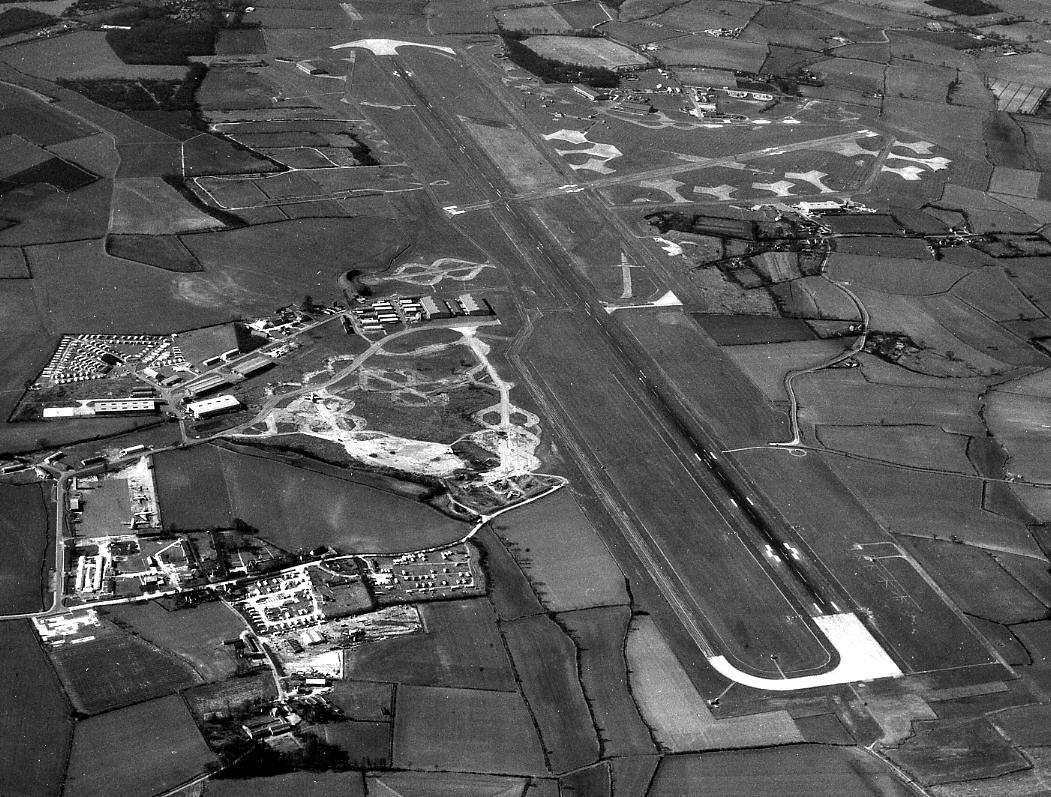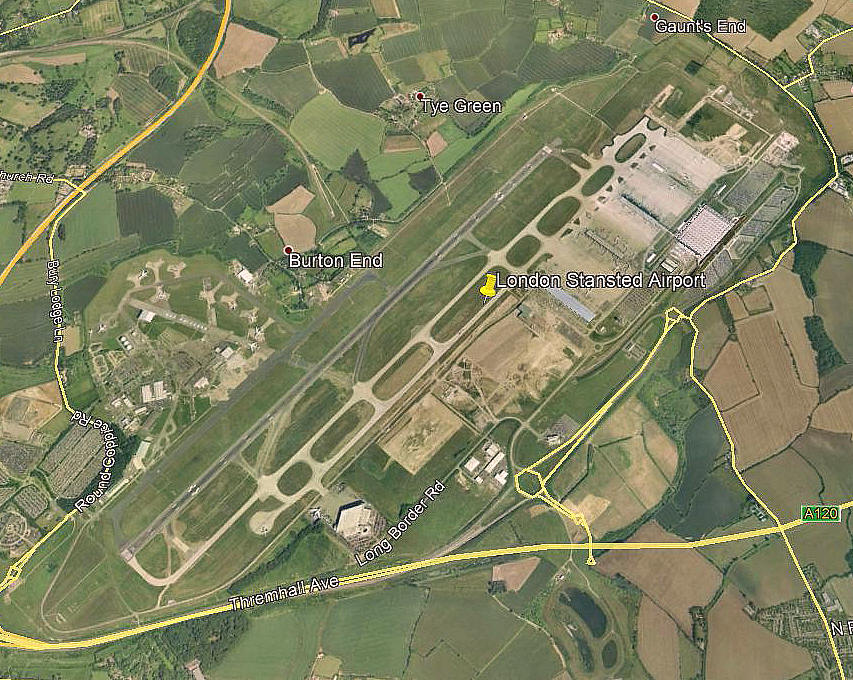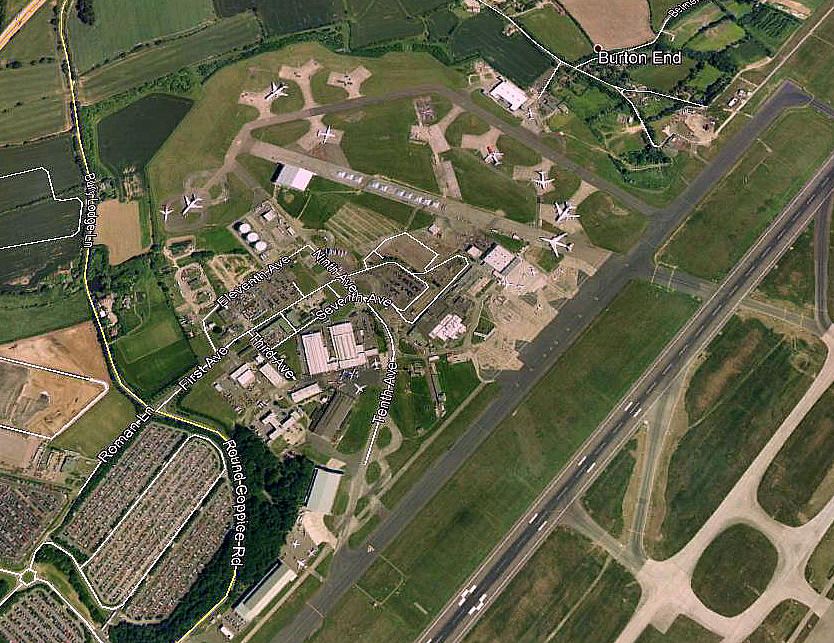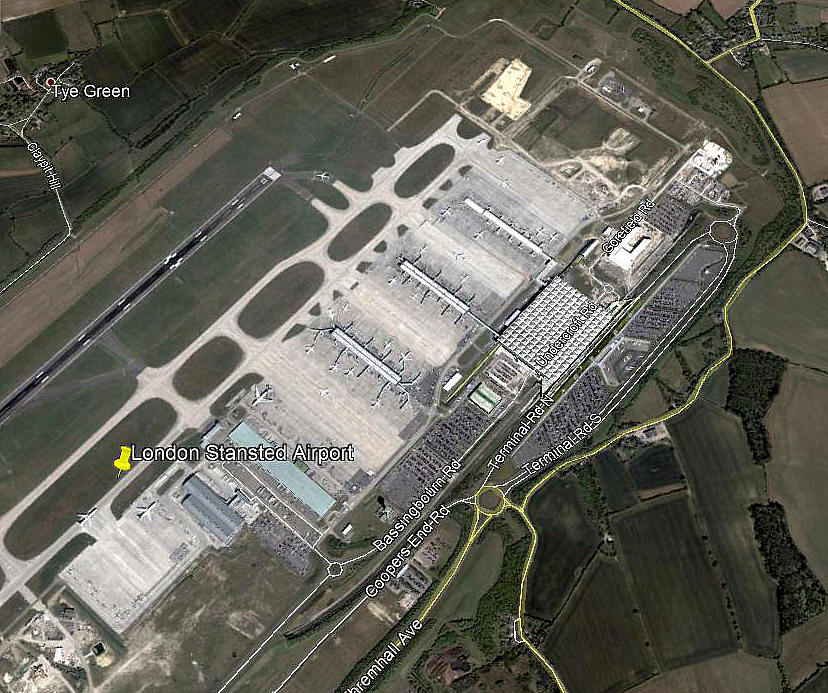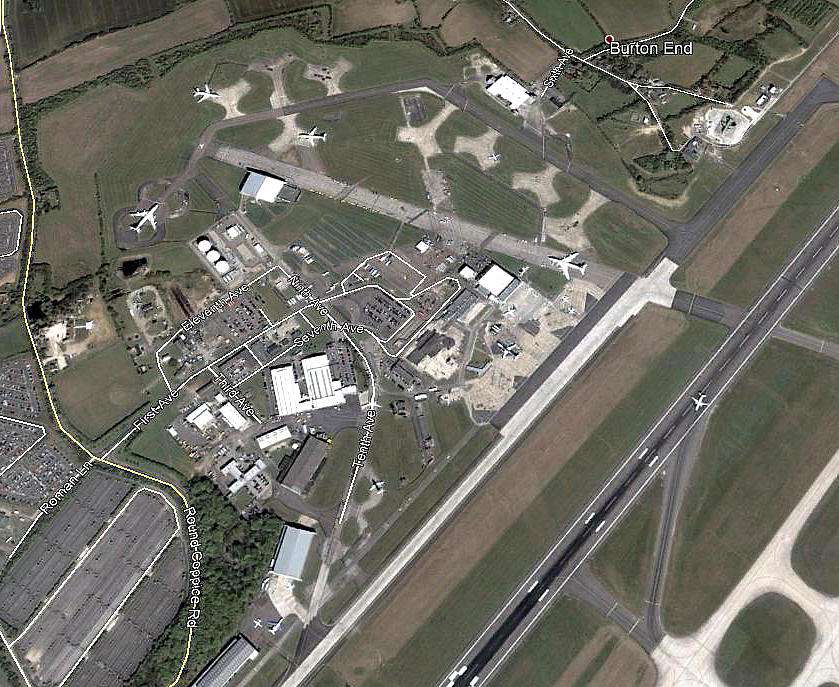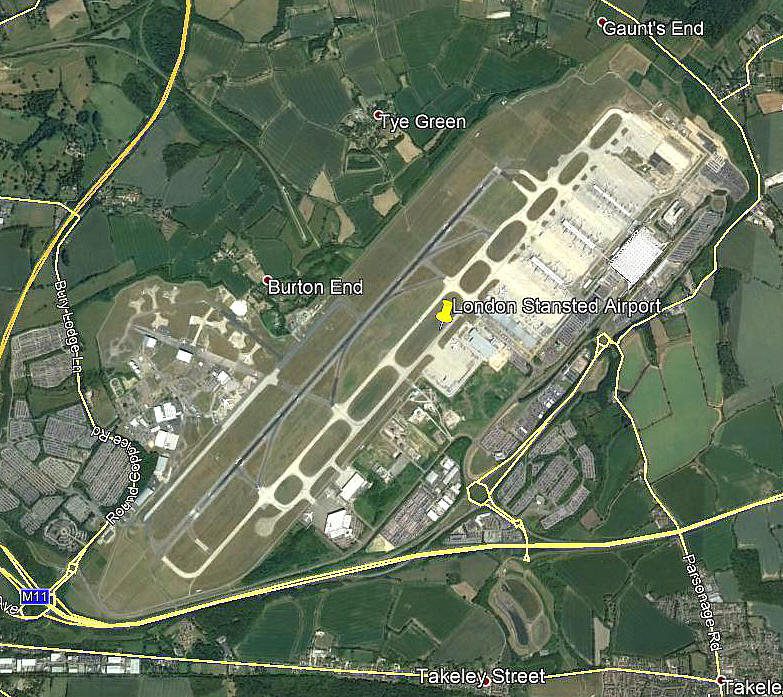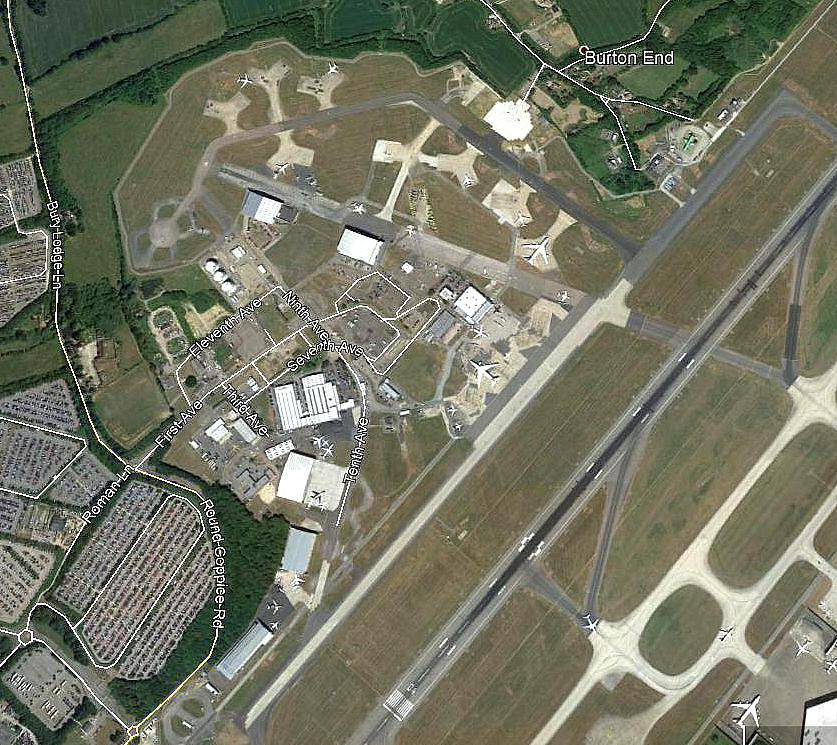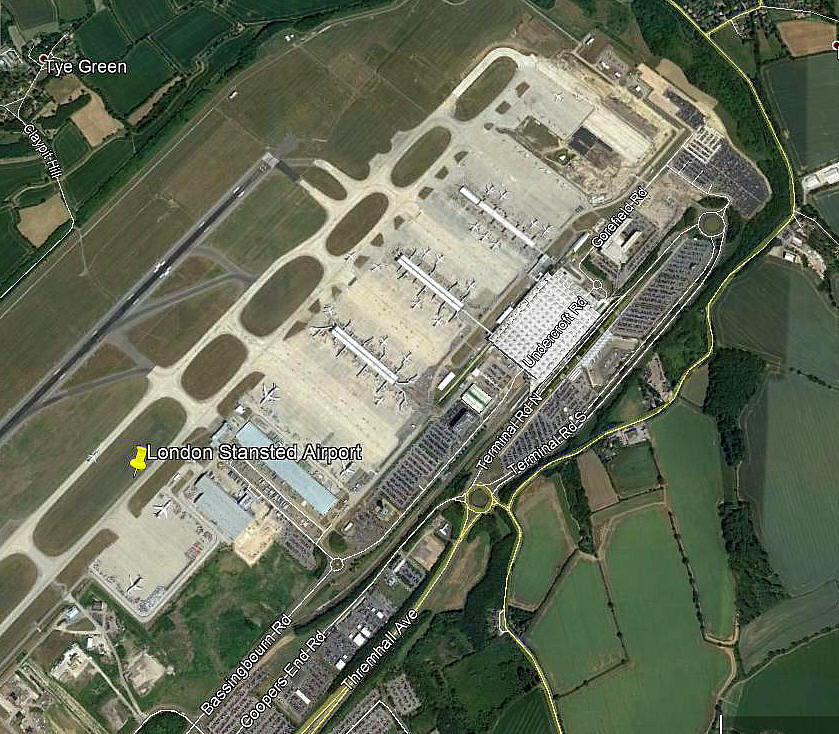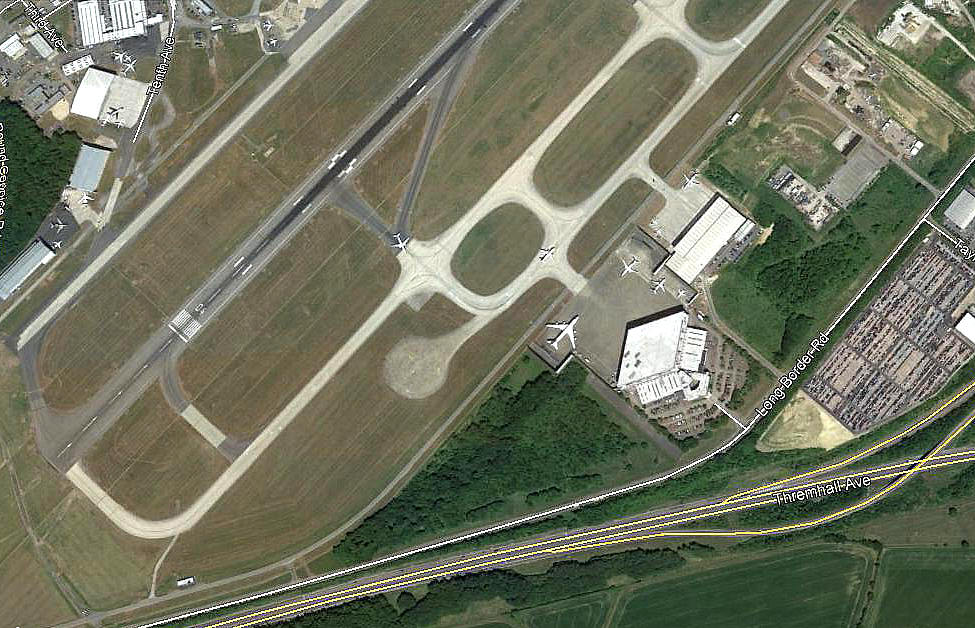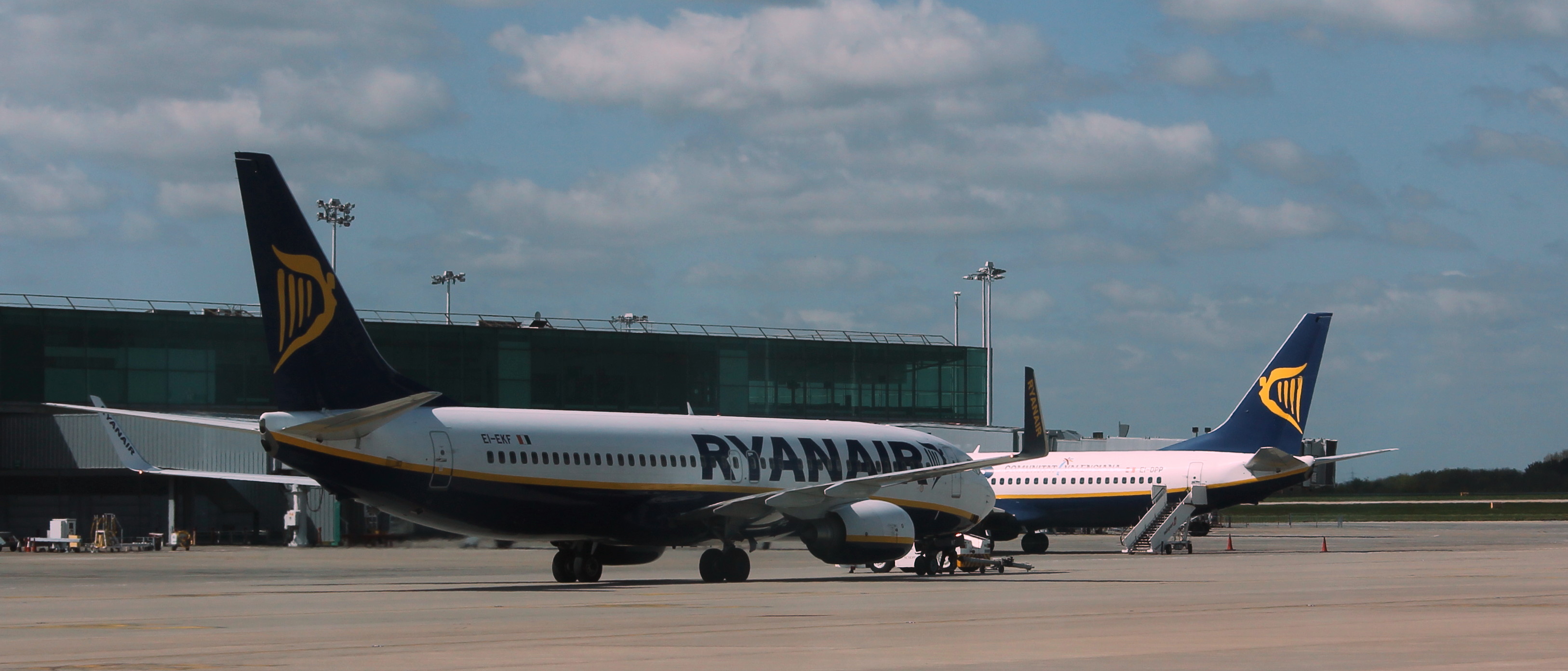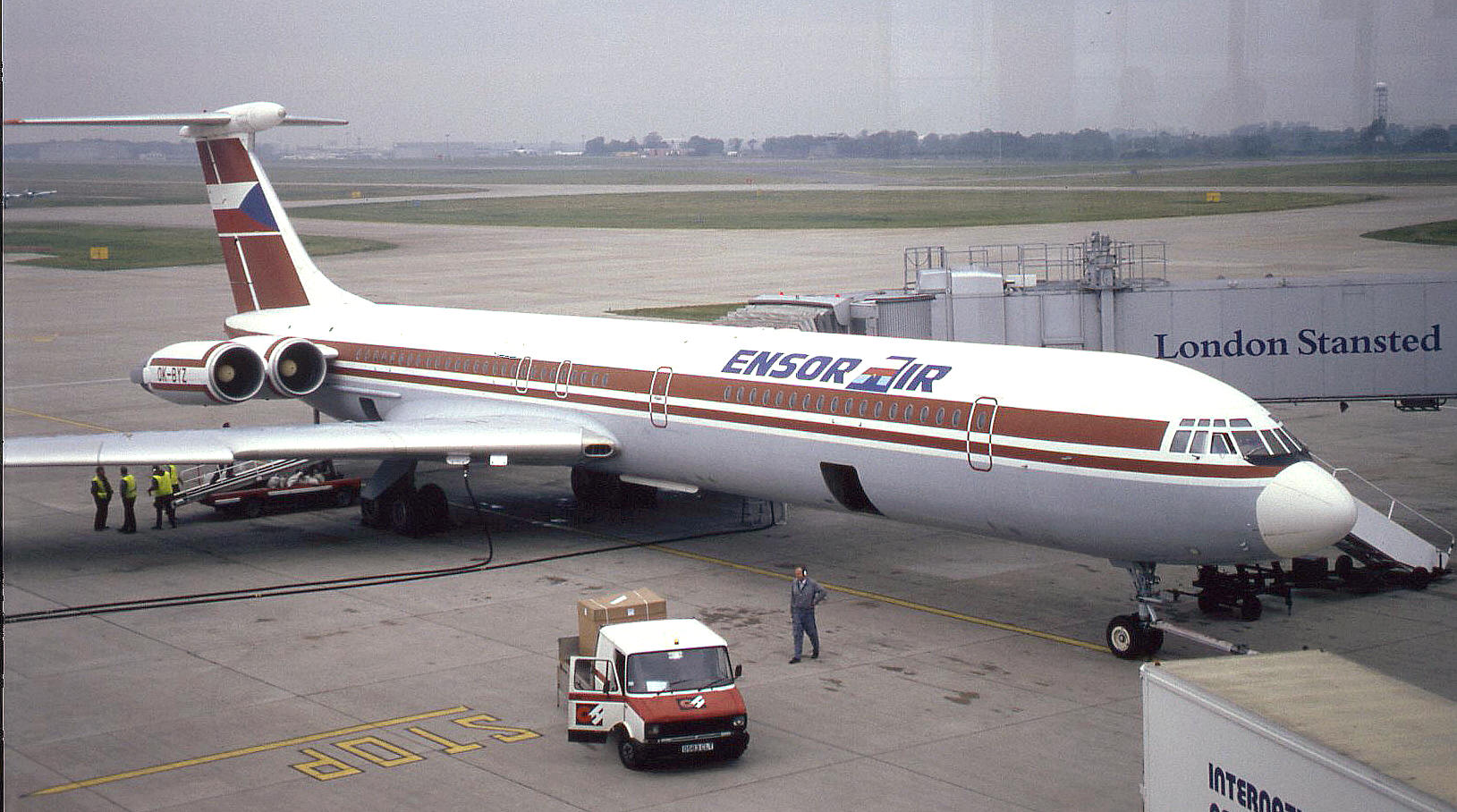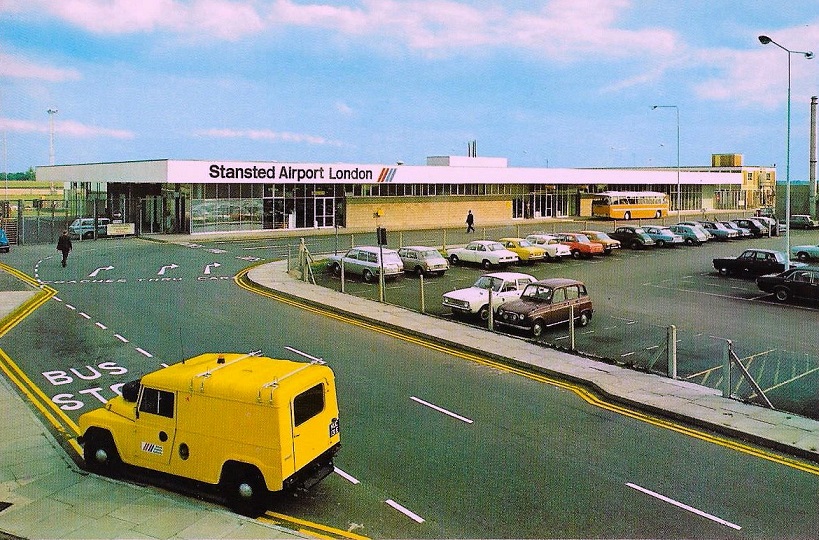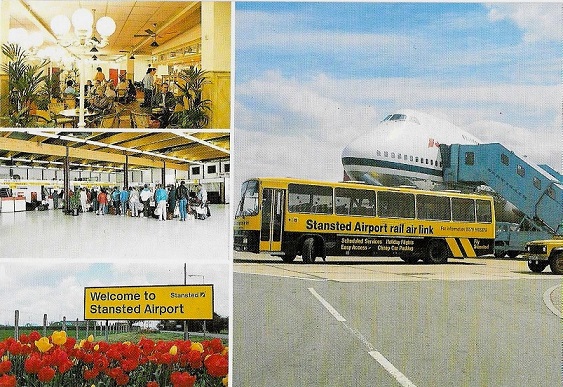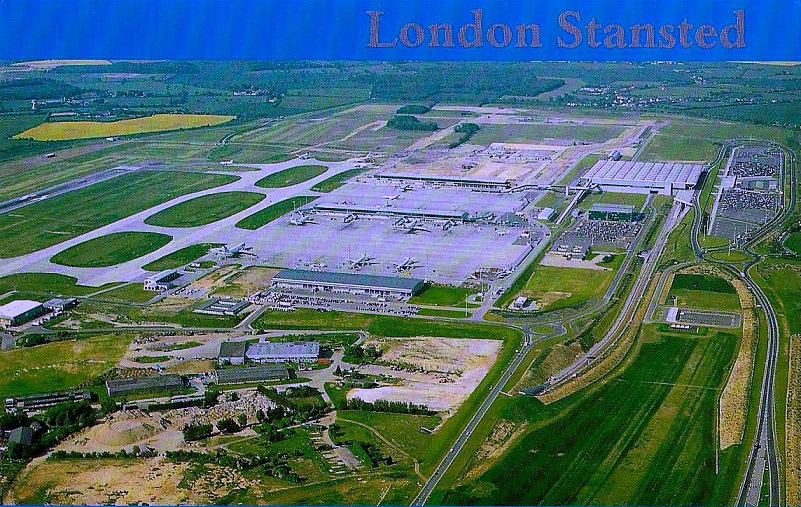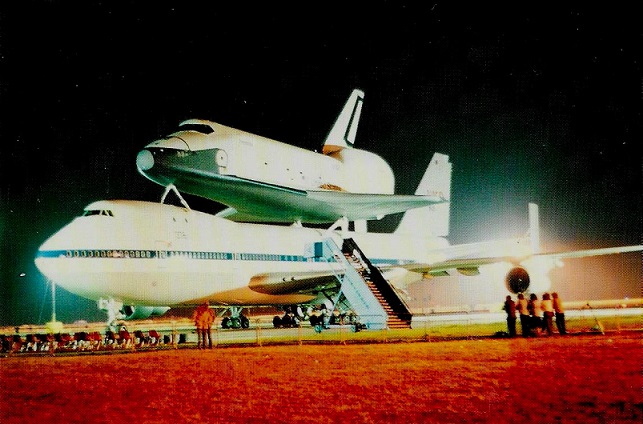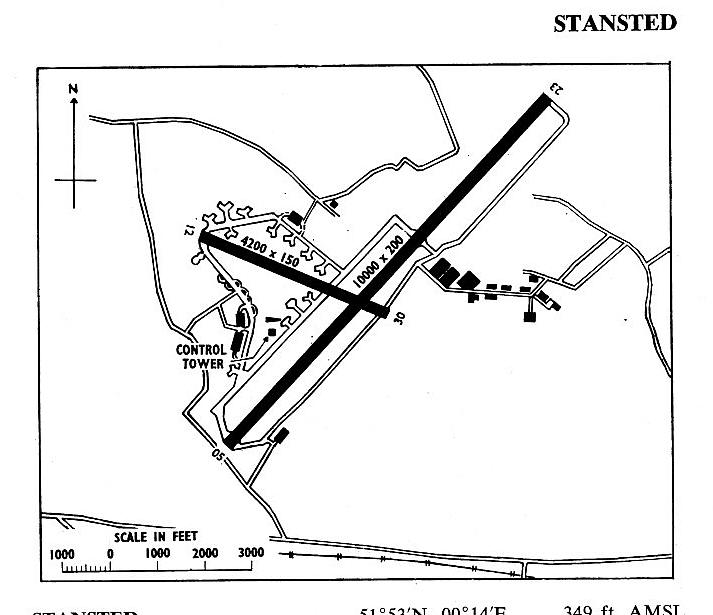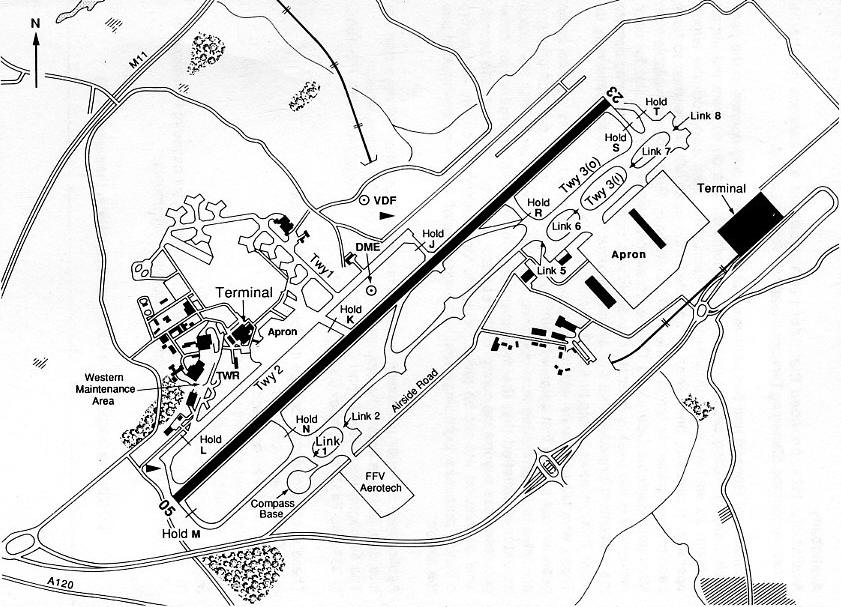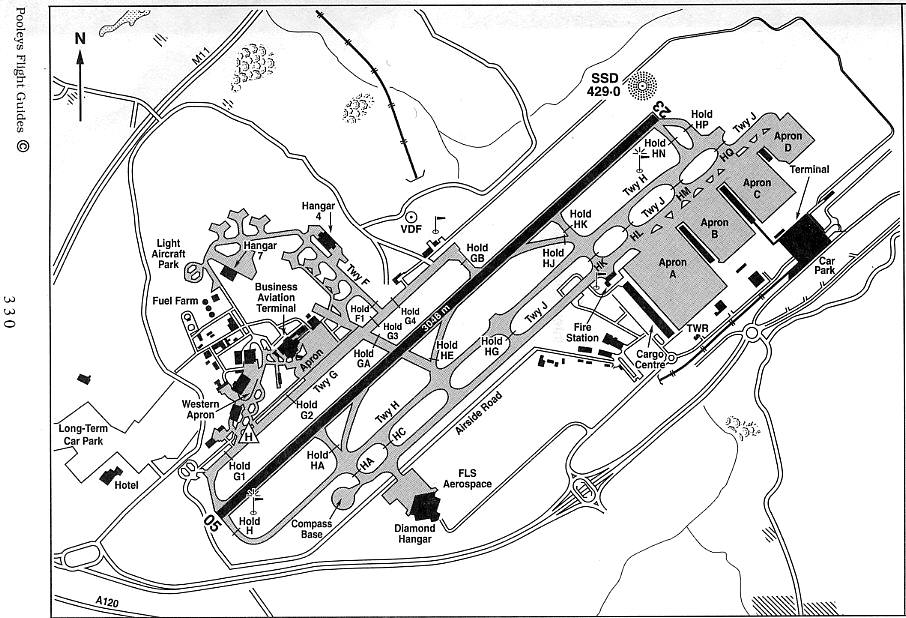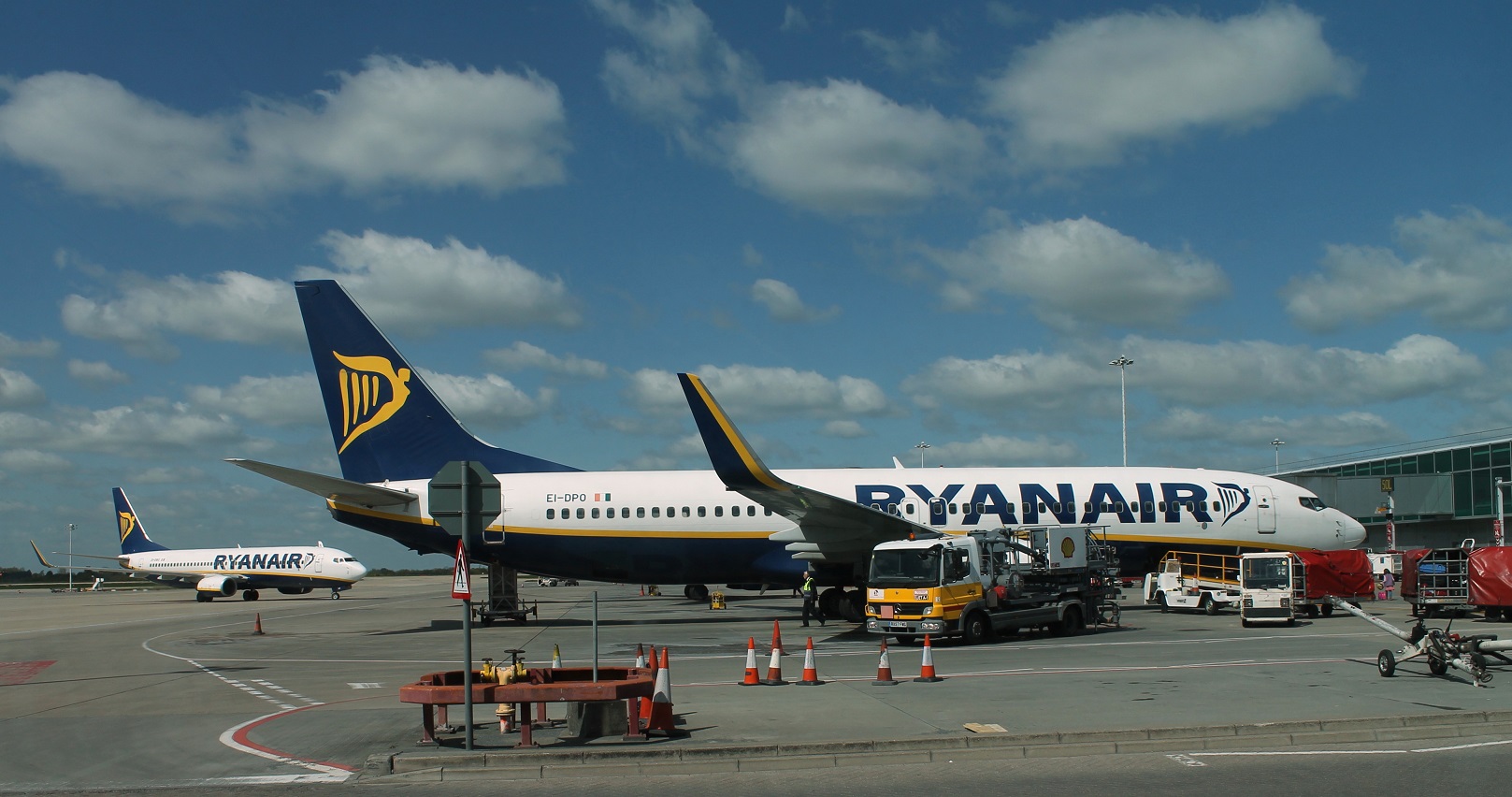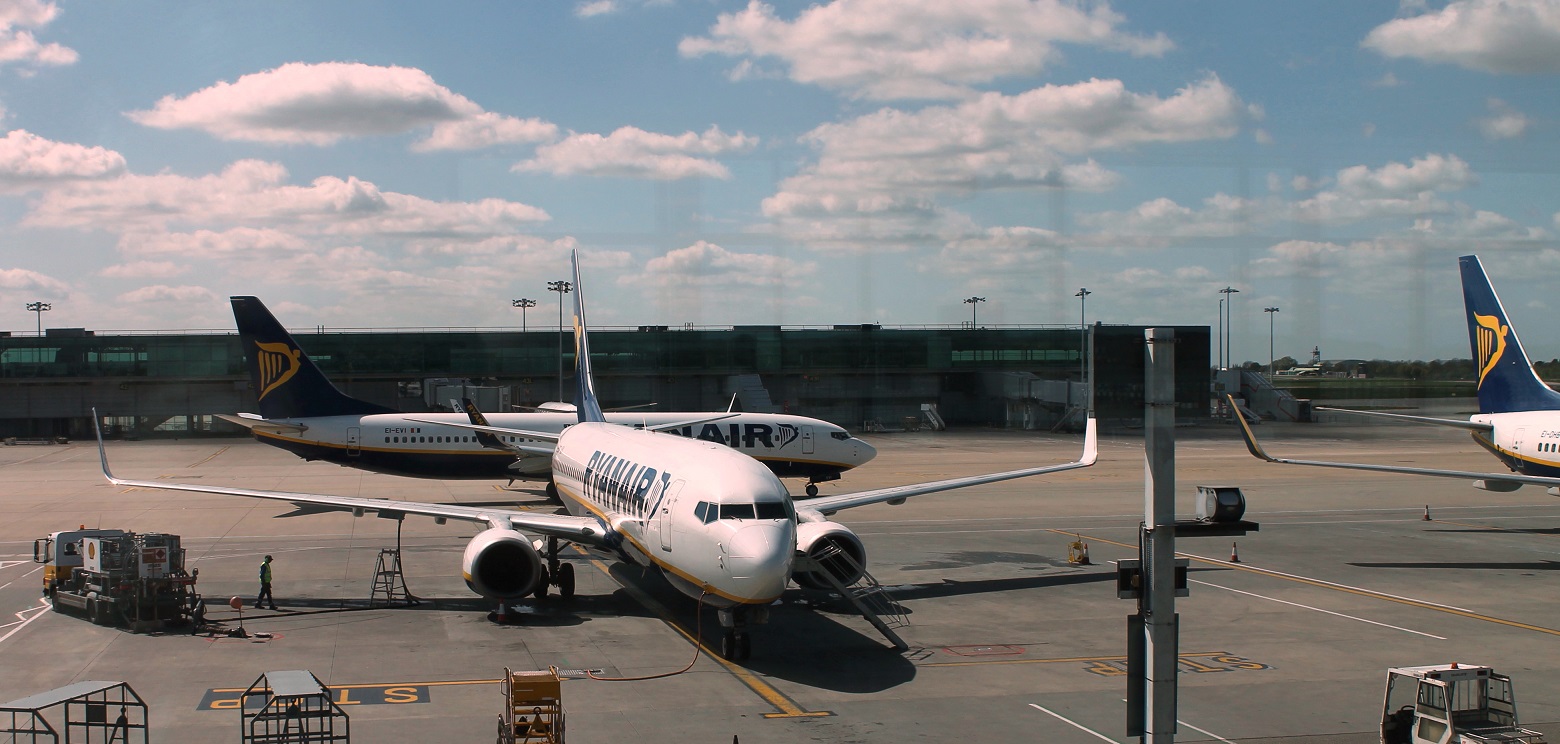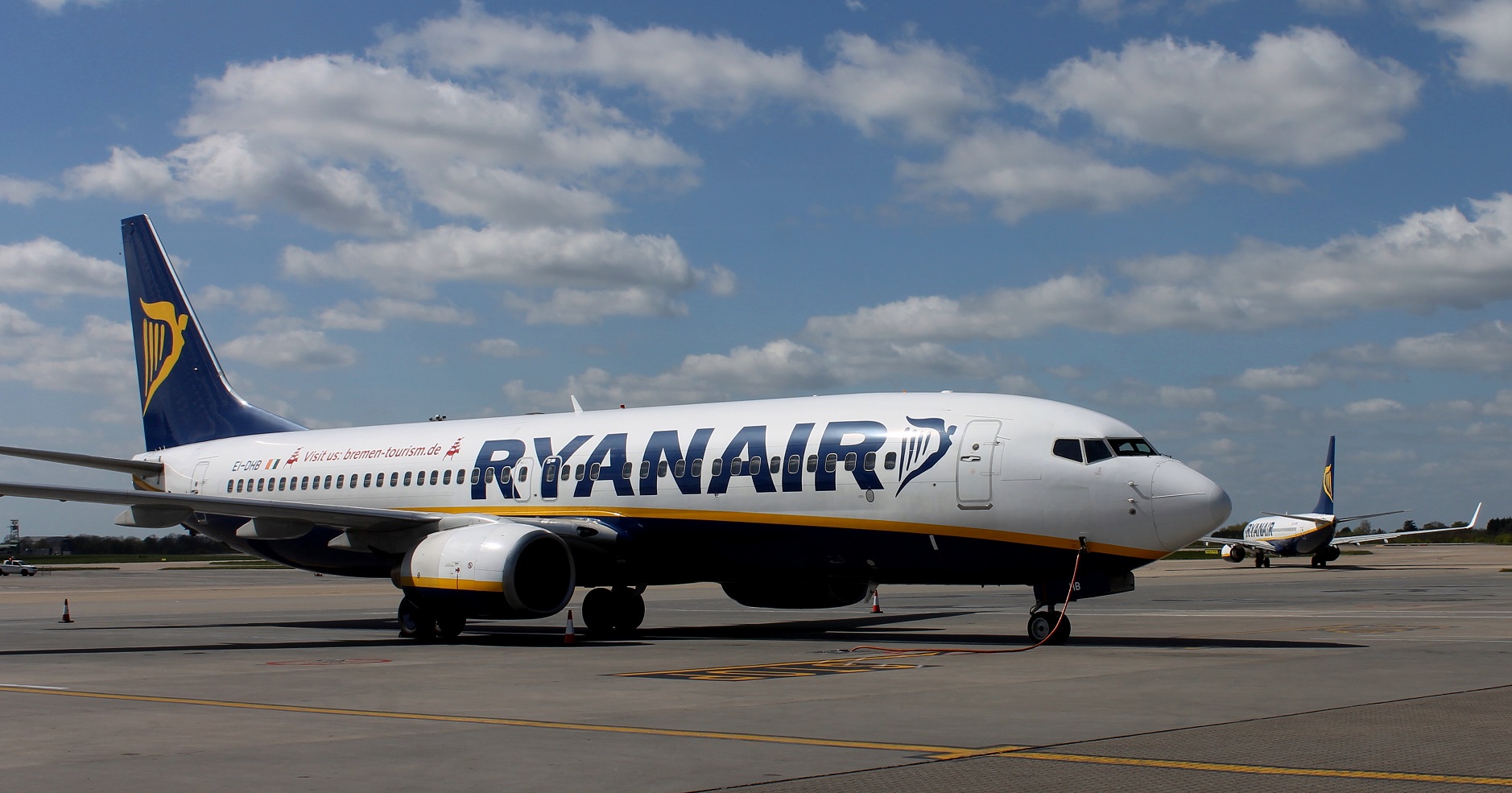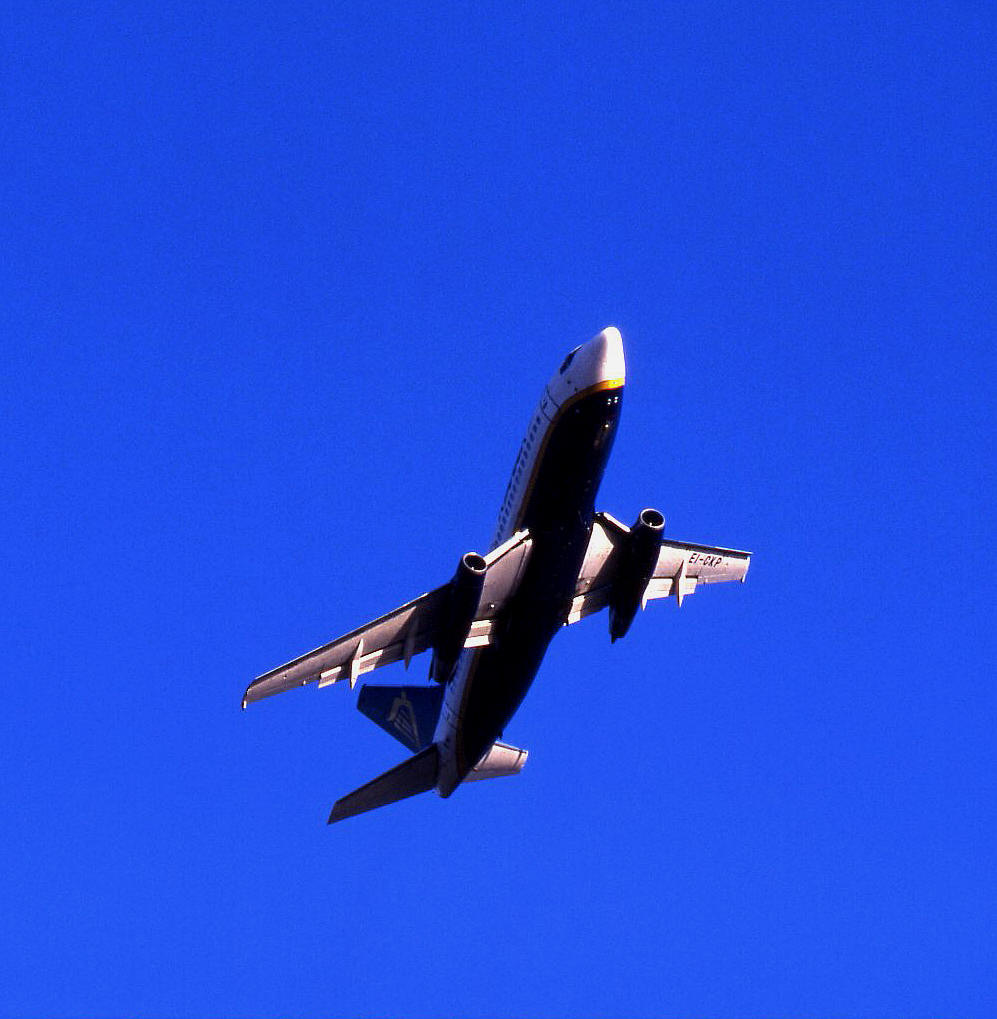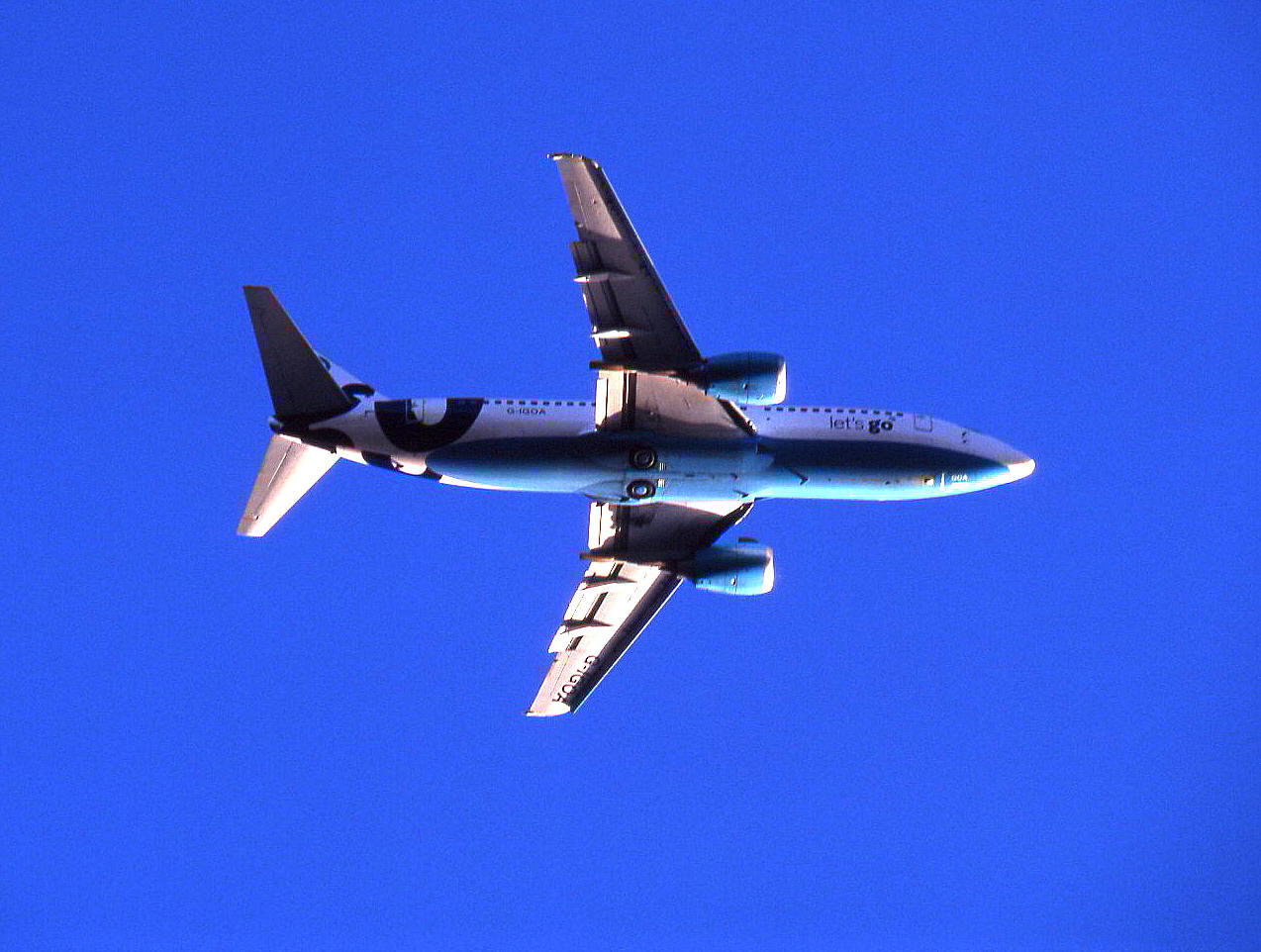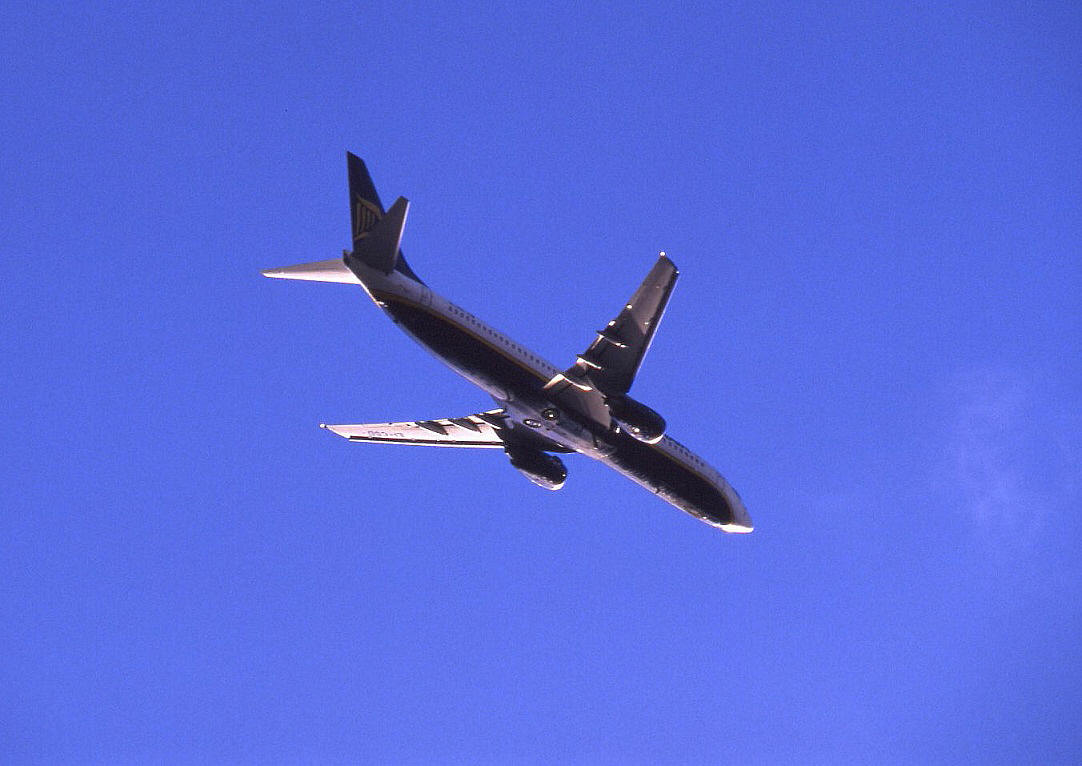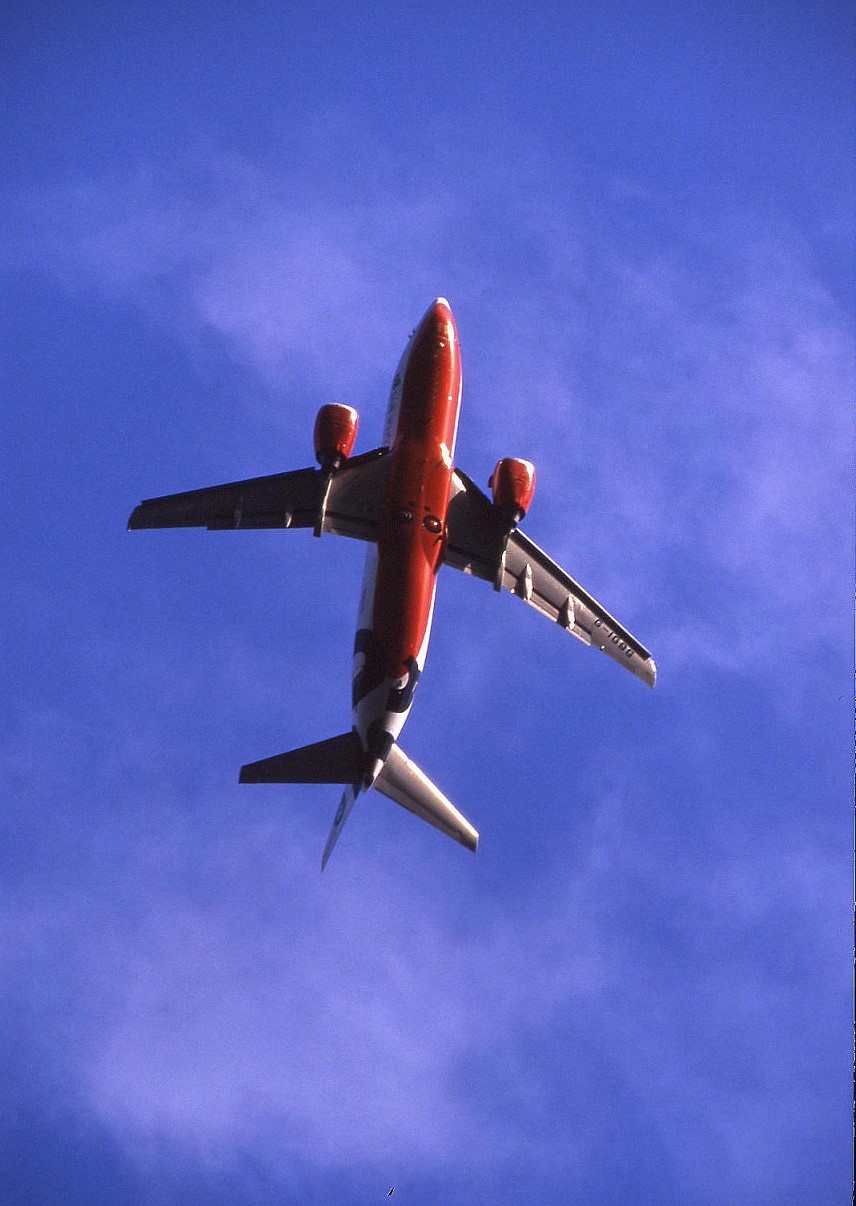Stansted Airport
STANSTED AIRPORT
Military aerodrome later civil regional airport and now a major LONDON airport known as LONDON (STANSTED) AIRPORT.
This was the third London airport after HEATHROW and GATWICK, before LUTON then LONDON CITY joined the ‘club’. The development of STANSTED has been phenomenal, especially during the period from 2000 on. A large facility exists on the west side of the airport for the servicing and, presumably refurbishment of airliners and executive jets.
Note: All these pictures were obtained from Google Earth ©
Note: Other pictures by the author unless specified.
ICAO code: EGSS IATA code: Initially ZSD, then LSA and now STN
Military user: WW2: USSTAFE Air Service Command Tactical Air Depot & (8th or 9th ?) USAAF operational base with Martin B.26 Marauders
Post WW2:
'V' Bomber dispersal airfield
Operated by:
1965: Ministry of Aviation
From 1966: British Airports Authority
1990/2000: Stansted Airport Ltd
The caption for the opening photograph above is: "On April 1 the British Airports Authority takes over four British international airports from the Ministry of Aviation - Heathrow, Gatwick, Stansted and Prestwick. Here is a view of Stansted airport which is currently the subject of a public enquiry into its expansion and development as a third major airport for London." When you look at this picture I suspect, as I did, that you'll see scant evidence of what we'd expect of the infrastructure required to be nominated as an 'international airport". The terminal building we have today is situated to the right of the main runway, at the far end.
British airline users: Air 2000, Air Charter, Airtours International, Air UK, Aztec Air (Air Bristol), Britannia Airways, British Midland Airways, British United Airways, British World Airlines, Business Air, Channel Airways, Channel Express, EasyJet, Emerald Airways, Flightline, Gill Aviation, Go Fly, Jersey European Airways, Kearsley Airways, Leisure International Airways, Lloyd, Monarch Airlines, Scottish Airlines, Skyways, Thomson fly & Trans Meridian
Foreign airline users: Aeroflot, Air Asia, Air Berlin, Air Club International, Air Europa, Air Exel Netherlands (Exel Commuter), Air France, Air Inter, AirKibris, Air Malta, Akdeniz Airlines, American Airlines, American Trans Air (Amtrans), Aviaco, Balkan-Bulgarian Airlines, Buzz, C.S.A. Ceskoslovenske Aerolinie, Empresa Cubana de Aviacion (Cubana), El Al Isreali Airlines, Ensor Air, European Air Transport (Eurotrans), Flying Finn, Finnair, Intersun, Istanbul Airlines, Luxair, My Travel, Ryanair, SkyEurope, Sterling Airways, Wizz Air
Charter, air taxi: Air Charter, Air International Charter, British Midland Airways, British United Air Charter, Channel Airways, Kearsley Airways, Skyways, SaxonAir, Surrey Flying Services, Titan Airways, Wm Dempster
Note: The emergence in recent years, due to the largely global economic boom, of the 'executive' jet and helicopter market, has been astonishing. In Europe the demand is quite incredible and major exec jet centres have been established at, for example, BIGGIN HILL, FARNBOROUGH, LUTON, NORTHOLT and STANSTED.
SaxonAir at STANSTED is I would suppose a fairly typical example of the larger companies competing in this market, and in 2016 their fleet comprised: G-MRLX, a Gulstream G550, G-KLNE, a Hawker 900XP, G-TWIY a Hawker 750, G-POWO an Embraer Phenom 300, G-KLNE a Hawker 400XP and G-KLNW Cessna Citation Mustang. In effect a fleet that could cope with almost any demand for most destinations, not only around Europe, but globally.
In addition, having decanted their high flyers at STANSTED, SaxonAir could also deliver them, or retrieve them, from almost anywhere in the UK pretty much on the spot using their two advanced helicopters; G-KLNP a Airbus Helicopters H120 and G-KLNH the Agusta AW109SP.
CAFU: 1975: (DH104 Dove, HS.125 & HS.748 types) CAFU = Civil Aviation Flight Unit
Car ferry: British Air Ferries
Air Cargo: Global Supply Systems, Federal Express, Heavylift, Korean Air, L.A.M.S, Lloyd International, TNT International, UPS
Flying Club: Skyways Flying Group
Note: In the 1957 'The Aeroplane' directory the Skyways Flying Group were listed as operating one Piper Cub. This was long before the type was regarded as a 'Classic'.
Maintenance: Aviation Traders Engineering
Manufacturing: Aviation Traders Engineering, Handley Page
(Ron Smith gives the latter detail stating that the HP.88 VX330 crashed here on the 26th August 1951 after twenty-eight flights. Did over-capacity at RADLETT dictate this?) The aircraft was built by Blackburn, (for research into Victor wing design), so it does appear the Handley Page team involved here was really not much more than a temporary flight testing facility? Did they have the means to carry out on-site modifications?
A MIKE CHARLTON GALLERY
These pictures from postcards were kindly sent by Mike Charlton who has an amazing collection. See: www.aviationpostcard.co.uk
First picture. It is just a guess but I think this picture is of the old terminal after it had been extended in 1970? The new terminal was opened in 1991.
Second picture: The Boeing 747 was operated by Wardair Canada. Founded by Max Ward in 1952 and based in Edmonton, it changed its name to Wardair Canada in 1976 and at one time had a fleet of thirty aircraft. In 1989 it became part of Canadian Airlines.
Fourth picture: The visit by the Space Shuttle Enterprise occurred on the 5th June 1983 during a tour of Europe.
Location: E of M.11 motorway, N of the A120, 3nm ENE of Bishops Stortford
Period of operation: Military: 1943 to 1948? Civil: 1947 to -
Note: These maps are reproduced with the kind permission of Pooleys Flight Equipment Ltd. Copyright Robert Pooley 2014.
Runways:
WW2: 06/24 1829x46 hard 01/19 1280x46 hard 13/31 1280x46 hard
1965: 05/23 3048x61 hard 12/30 1280x46 hard
1967 to 2005: 05/23 3048x46 hard
NOTES: In December 1946 Dr Graham Humby, (plastic surgeon being his main profession it is said), moved his LAMS (London Aero Motor Services), air freight operation using ex RAF Halifax bombers from ELSTREE to STANSTED. He built up this organisation to over forty Halifax’s operating around the world with associate companies in South Africa and Australia. He also formed maintenance arrangements in New York and Isreal making the operation really very efficient. Late in 1947 Dr Humby went to Seattle to see about purchasing a Boeing Stratocruiser. Whilst there he became very ill and quickly died of tuberculosis. Without him at the helm the company soon foundered and was bankrupt the next year. One of LAMS employees was Freddy Laker!
I’m wondering where Dr Humby got his inspiration from, or, did he invent the concept of commercial global air freight operations? The Berlin Airlift operations didn’t occur until 1950 (?) but military airlift operations, like flying “over the hump”, from India to China over the Himalayas in WW2 may well have inspired him. It is of course a vast step to take from a military logistical exercise a viable commercial operation. On the other hand in WW.2 many “moonlighting” cargo flights supplying the lucrative ‘black market’ were undertaken by, it seems, USAAF crews at least. I’d bet a penny to a pound RAF crews got involved too.
AIR CHARTER and OTHERS
Air Charter were also involved in the Berlin Airlift operations having bought surplus ex-RAF Yorks and Lancasters to make three serviceable Yorks! When the Berlin Airlift operations stopped these Yorks were used on charters and trooping duties as far afield as Fiji! On the other hand at one point it seems that Skyways had, in 1953, twenty eight Yorks based here mainly for trooping flights. Later Skyways operated Handley Page Hermes and Lockheed Constellations, (the latter on freight charter to BOAC). In 1962 Skyways were taken over by Euravia which then became Britannia Airways based at LUTON.
In 1957 the Air Charter fleet comprised three Douglas DC-4s, six Avro 688 Tudor 'Supertraders' and seven Bristol Freighters. In 1956 an Air Charter 'Supertrader' performed a round-the-world charter via Christmas Island in the Pacific. The Bristol Freighters were employed from SOUTHEND on car ferry operations by their subsidiary Channel Air Bridge with a service to Rotterdam in the Netherlands, plus a joint service with SABENA to Oostende (Ostende) in Belgium.
Another fine example of the initiatives and perseverance in post-War Britain was Kearsley Airways formed in 1947 at STANSTED. Undertaking a wide variety of charter work using three ‘Daks’ – G-AKAR, G-AKDT and G-AKOZ. As well as flying around the UK and Europe the Kearsley ‘Daks’ flew as far afield as Africa, India and the Far East. Of perhaps more note Kearsley was one of the first ‘airlines’ to operate on the Berlin Airlift and by the end had flown the second largest number of sorties conducted by any civil operator!
An Air Charter Bristol Britannia completed a round the world flight on MoD contract work in Feb 1958.
In the 1960s both BEA and BOAC used this airport for crew training flights. I mention all this just to prove that STANSTED really does has a very rich aviation history - something I suspect that few if any of those going on holiday from here today have any knowledge of, as all they'll see is the quite notable terminal designed by Norman Foster & Partners. But how many take any notice, know of this, or couldn’t care less anyway?
SUCH A CHANGE
In his book UK Airports published in 1993, Austin J Brown has pictures of the new terminal, designed by Norman Foster & Partners, (but mistakenly captioned as a Richard Rogers project), appearing eerily deserted. In 2014 I was booked on a return Ryanair flight from Brno in the Czech Republic. Both flights were full to capacity as was, it appeared, both the subsequent outbound and inbound flights. The terminal building on both occasions was packed throughout which clearly illustrates that business here is booming.
It seems rather odd to me, and certainly counter-intuative, that very soon after the ‘Banking Crisis’ in 2008, the south-east of England quickly developed into a ‘boom period’ the likes of which have never been seen before – and the ripple effect soon spread to the regions. In 2014 it was still going on. By this time STANSTED had become the major UK base for Ryanair operations and it was quite astonishing to see just how many people were using this airline. It is very obvious that STANSTED, along with HEATHROW, GATWICK, and LUTON have become hugely successful, and, according to experts on the subject - passengers volumes are continuing to increase for the forseeable future.
A HI-JACKED AIRLINER ARRIVES IN THE UK
When did the idea of hi-jacking airliners first start? In the 1970s perhaps? The only example I can think of which involved the UK was in 2000 (?) when a 727 high-jacked in Afghanistan eventually landed here.
A NOTE FROM A WANNABE ANORAK
Who today, me included when standing in the terminal, can even half believe that in 1956/7 Aviation Traders contracted to overhaul and modify ex-RAF North American Sabre jet fighters here before they were returned to the USAF.
PICTURE GALLERY
In recent years Stansted has become the major UK hub for Ryanair operations and the airline has become a huge commercial success. Despite not being a fan of the airline, they do strive to do something I have been banging on for years about; and that is to exploit regional airports so that people can depart and arrive by air as close as possible - rather than make long journeys to get to a huge 'hub' airport. However, they do often tend to 'guild the lilly' by giving major city destinations where in fact they are operating from airfields far away. Take Hahn in Germany for example being described as "Frankfurt". Utterly ridiculous.
STANSTED DEPARTURES JANUARY 2000
STANSTED AIRSTRIP
In the August 2019 edition of Light Aviation magazine, in an interview article with Phil Hall, he mentions that in 1990 he was involved with a Super Cub group operating G-LION just outside the boundary fence at STANSTED. He says, "We had to turn immediately left or right after take-off to avoid going over their fence."
So, presumably, with winds prevailing from the west, this strip was located on the east side of the airport? If anybody can kindly offer advice, this will be much appreciated.
lisa
This comment was written on: 2015-07-24 19:05:06My father used to fly in here years ago in a two seater, high wing, not sure what the plane was though. Funny thought really.
Reply from Dick Flute:
Thanks for the memory. Not sure that would be possible today, and even if it was the landing fee might be worth more than the aeroplane! Cheers, Dick
GJ Thomas
This comment was written on: 2015-07-25 17:51:00We tried to get in but the handling fee was over 1000 quid. So we settled for lunch at Andrewsfield!
Reply from Dick Flute:
Well - I did say. Cheers, Dick
GJ Thomas
This comment was written on: 2015-07-25 23:08:39Have you ever flown into Stansted in a light aircraft?
Reply from Dick Flute:
No, but I wished I had when I once had the opportunity to do so, when the landing fees were far more reasonable. Over-flew the place a few times. Regards, Dick
Robert
This comment was written on: 2015-07-26 16:39:39Dont waste your money. Staff were very rude to us and long delays.
Reply from Dick Flute:
I have used all the London airports over many years and have to say that Stansted is my least favourite. However, Stansted does, (or did), serve some destinations not available from the others.
Roger Perry
This comment was written on: 2018-01-24 14:00:30My aunt & uncle lived in Burton End, and I spent many happy summer hols there in the late 50s/early 60s on the airfield; if you came in at the top gate there was no security. Avril Tudor was my favourite. True story: Tudor undergoing checks prior to trooping (to Cyprus I think). Cousin had evening paper round from Smiths at Stansted station. We walk through open gate, across grass, up the rear steps into fuselage, call out "paper", fitter shouts back "in cockpit"! We walk up fuselage (tail dragger!) and hand over paper. Aircraft off to Cyprus shortly with troops. Happy days indeed.
Reply from Dick Flute:
Hi Roger, Many thanks for the lovely memory. Best regards, Dick
RICHARD FISHER
This comment was written on: 2020-11-28 13:51:49I did my GFT with a CAFU Chipmunk, here at ZSD, then later in 1963 my CPL Instrument Rating for a partial I think on an Anson/Avro XIX, and then an Apache. Also, Night Rating on a CAFU Dove. Post retirement off BA 744s, I flew BAC 1-11s, visiting both STN new Terminal and the VIP Hanger/Terminal on the other side.
We'd love to hear from you, so please scroll down to leave a comment!
Leave a comment ...
Copyright (c) UK Airfield Guide















